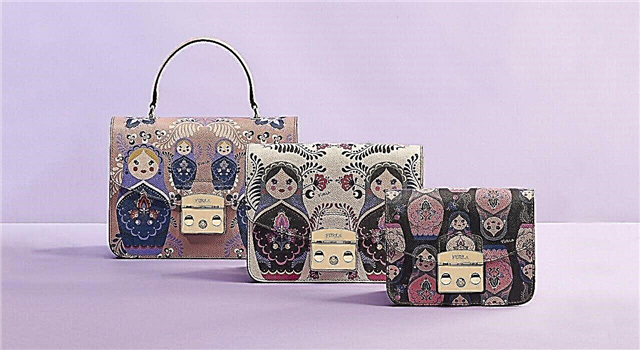Five different ways to make a slice + video for each recipe so that everything is clear!
What is slime / slime?

Photo: mccormick.com
Slime, or lizun, is an anti-stress toy that is plastic, well stretching, at the same time sticky and maintaining its unity. It is pleasant to crush him in his hands, children (and adults) like to play with him. Initially, the slime was invented and released by Mattel back in 1976. Since then, the word "slime" has become a household word, other companies began to produce such toys, and after the slime (in our country it is also called a slime), craftsmen at home began to make it. Moreover, as it turned out, making a slide with your own hands is quite simple.

Photo: thebestideasforkids.com
To date, there are a great many recipes for slimes, including hand-made ones. Masters sell them on Etsy, some DIY channels on YouTube are entirely devoted to making slides ... Slides made according to different recipes are also different: more liquid or dense, airy or close to jelly. Dyes, sparkles and so on are added to the slimes - so they are also interesting and varied in appearance.
We have collected for you some simple recipes for making different slimes / slides at home. All recipes are with video: it’s easier to understand how to make a slice.
But first, let's clarify the issue that is important for making a slime / slime according to a classic recipe.
DIY puppets
What glue is suitable for slime / slime?

Photo: haneemslime.blogspot.com
In fact, in order to make a plastic, soft, well-stretching and non-sticky mass, two ingredients are enough: glue (often take PVA) and a thickener (it is easiest to take a solution of sodium tetraborate glycerin, it is sold in pharmacies and is inexpensive )
In fact, it may turn out that not every PVA glue is suitable for making a slime. Craftsmen made a list of brands and types of PVA adhesives that are suitable to make a slime. We bring it for you:
1). Glue PVA "Joiner moment" (preferably white);
2). PVA Berlingo;
3). PVA Brauberg;
4). PVA Erich Krauser;
5). PVA "Contact";
6). PVA Novochem;
7). PVA Attomex;
8). PVA "Omega";
9). PVA "Red beam";
10). PVA-M;
eleven). PVA Kores;
12). PVA "Cone";
thirteen). PVA "Every Day";
14). PVA Andex;
fifteen). PVA Stick Up;
sixteen). PVA "365 days";
17). PVA Elmers;
eighteen). PVA-K19;
nineteen). PVA VGT;
twenty). PVA "Lacra";
21). PVA Deli;
22). PVA "Titan";
23). PVA-K;
24). PVA White House.
Transparent stationery glue is also suitable for making lizun. Using PVA, a slice is usually opaque, but with clerical glue it is the other way around (unless you add some other color-giving ingredients).
How to sew toys according to children's drawings: 3 master classes
Slime / Lizun Classic Recipe

Photo: thewirecutter.com
You will need:
- suitable PVA glue;
- sodium tetraborate;
- container and spoon / stick for mixing;
- optionally - dye.
Work sequence:
Pour glue into the container. If desired, you can add a drop of dye, mix (if your experience in making a slime is the first, you can try to make a slime without dye). Next, slowly add sodium tetraborate and mix until the mixture reaches the desired consistency.
This video demonstrates how to make a slime according to the classic recipe and how the addition of dye affects the consistency of the slime (and also what will happen if you take the wrong glue):
DIY felt toys: 6 ideas with master classes
Slime / Slime with Toothpaste and Shaving Gel

Photo: littlebinsforlittlehands.com
The slime is airy, voluminous and magnificent.
You will need:
- silicate glue - about 90 ml (3 small vials);
- dye (for example, liquid food) - about a drop (optional);
- toothpaste - about a teaspoon;
- shaving gel - about 2 teaspoons;
- a solution of sodium tetraborate in glycerin (sold in pharmacies) - about a teaspoon;
- container and spoon for mixing.
Work sequence:
In a clean container, add one by one the ingredients in the sequence in which they are listed in the list above, mixing everything well each time. Add sodium tetraborate last, and it’s better not immediately, but a little, stirring each time. You will understand that this substance is enough when your slime sticks off the walls of the dishes. In conclusion, remove the slime from the dishes and knead well with your hands, like dough.
Visually - in the video:
DIY toys: little friends
Transparent slime / slime

Photo: cnet.com
Usually transparent lizun is made of transparent silicate glue. If you want the slime to become more liquid, at the first stage the glue must be additionally diluted with water. But you can not dilute it - the slice will be more elastic, as in the above version. In this example, borax is used as a thickener, it is the same sodium tetraborate, but in dry form, it must be diluted with water before work (1 tablespoon of powder per 50 ml of water). You can use a ready-made solution of sodium tetraborate.
You will need:
- silicate glue;
- sodium tetraborate solution;
- container and spoon / stick for mixing;
- optionally - small sparkles (you need medium-sized sparkles, otherwise playing with a lizun will not be very convenient, its structure will be violated) and dye.
Work sequence:
Pour glue into the container. If you need a liquid slime - add water and mix. Add sodium tetraborate, mix. Add a little until the mixture has the desired consistency. Stir in containers and then with your hands. Now you can add the dye by interfering it in the slice. Then the lizun must be returned to the container and, sprinkled with sequins and covered with a lid, leave for 2-3 days. During this time, all the air bubbles will come out of the slime, and it will become perfectly transparent.
More and more clearly - in the video:
Funny DIY Sock Toys
Two simple slime / slime recipes without pharmacy ingredients

Photo: livinglocurto.com
If you don’t want to go to the pharmacy, and at hand there is a shower gel and starch or children's air plasticine, you can make a slime using one of the simple recipes.
Simple Recipe 1: Shampoo / Starch Slime / Lizun

Photo: diycraftsy.com
The slime is quite dense and resilient, matte, velvety, pleasant to the touch. It’s good to sculpt something out of it. This slime is not too durable: the starch freezes and the lizun dries, losing elasticity - even in a sealed container.
You will need:
- shower gel, liquid soap, shampoo (one of your choice) - about 1 tablespoon;
- dye (for example, acrylic paint) - a droplet;
- starch (any) - about 2-3 tablespoons;
- container and spoon for mixing.
Work sequence:
Pour shampoo into the container, add, if necessary, dye, mix. We start adding starch and mixing. Pour the starch and mix until you get the right consistency. If there is a lot of starch, it does not matter, add more shampoo. It is necessary to knead the slime well so that it stops sticking to the walls of the dishes, and then - even knead with your hands.
Simple recipe 2: slime / lizun from shampoo and air plasticine

Photo: momdot.com
Unlike the previous one, this lizun is more durable. If it is stored in a closed container or film, it almost does not dry out and retains its properties for a long time.

Air plasticine looks like this.
Photo: prom.ua
You will need:
- shampoo, shower gel, liquid soap - 1.5−2 teaspoons;
- air (aka light) plasticine (sold at toy stores, etc.) - 1 sachet.
Work sequence:
Airy plasticine in itself is very plastic, but when mixed with shampoo, it acquires new properties. It can be smeared on the surface and then easily assembled, stretched, wrinkled and so on. So, flatten the plasticine into a cake, add a little gel / shampoo in the middle and mix right in the hands.Add the gel a little while until the slime reaches the desired consistency.
Both recipes are clearly in the video:
Preview photo: blog.westernchief.com



